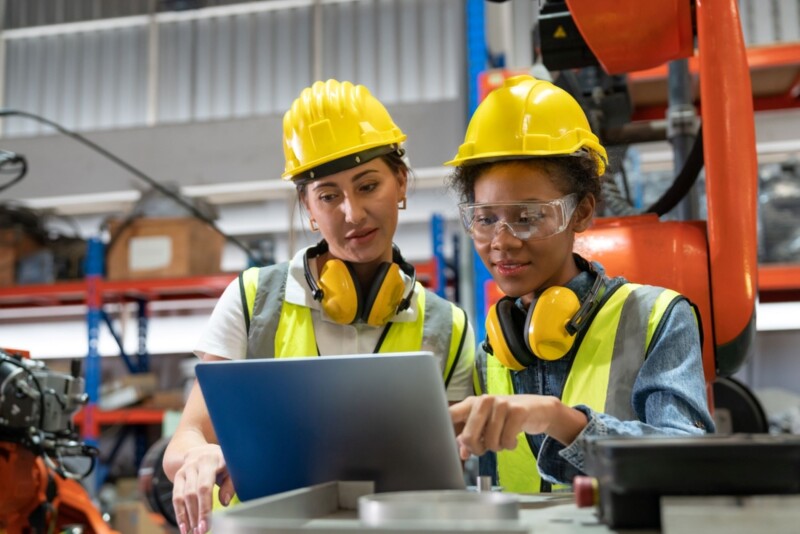Last week, Autodesk released their State of Design and Make Report, the second iteration of what will be an annual report polling industry leaders and experts about, well, the state of the design and make industry. On the landing page for this report, Autodesk describes it as identifying “the most pressing issues shaping today’s businesses and [helping] leaders make informed, strategic decisions about how to prioritize and invest in the future.”
The report is the result of a poll of 5,399 “industry leaders, futurists, and experts” that was completed between July and September of last year. The respondents come from Autodesk’s three main industries of coverage: Architecture, Engineering, Construction, and Operations (AECO), Design & Manufacturing, and Media & Entertainment. Responses are further broken down into three regions: Asia-Pacific; Europe, Middle East, and Africa; and The Americas.
In releasing this report, Autodesk themselves pulled out a few key takeaways from their perspective. That includes an optimistic outlook on the state of the industry, cost control emerging as the industry’s top challenge, the fact that digitally mature companies are reporting the most success, and more. Below we’ll dig into some of these takeaways from the second annual State of Design and Make Report.
An optimistic tone in the industry
It’s worth starting out with the same place that Autodesk did in their report, and that’s around the idea of growing optimism in the sector. When the first edition of this report was put together, questionnaires were sent to respondents in the late summer of 2022, which was a very different time than we find ourselves today. We were still firmly coming out of pandemic conditions, which of course rocked so many of these industries. We were also significantly earlier in the AI hype cycle, and while there are reasonable arguments to be had as to how much optimism said cycle should create, there’s little doubt of the actual effects we’re seeing on leadership’s attitudes across industry.

To put some numbers on the changing mindsets around these design-based industries, Autodesk cites a 30 percent drop in the number of leaders and experts who say the global landscape feels more uncertain now than it did three years ago. Furthermore, 72 percent of companies indicated they are outperforming expectations for the year, compared to just seven percent saying they are not keeping up with change in the industry. That latter figure is down 11 percent from the previous iteration of the survey. However, alongside all of that optimism was a look at how different countries responded about their company’s ability to be resilient and how prepared they are for the future, and Japan was notably worse off than every other country listed. Germany, on the flip side, was best positioned in that graph.
Really, the source of this broader optimism actually comes down to a fairly simple concept that, if we had data going back long periods of time, I’m guessing would fit a pattern. We just came off of a period of extreme challenges highlighted by the COVID-19 pandemic and the off-shoot issues that arose from that. Then we made it through, and the respondents to this questionnaire are, generally speaking, those who made it through those troubles. Therefore, they weathered a storm and are more confident that they, as well as the industry as a whole, can do so again if necessary.
Challenges facing the industry
Although the report as a whole certainly struck an optimistic tone, particularly compared to the previous year, there were still challenges touched upon that the industries in question need to face. One of the big takeaways is that, after talent-related issues topped the list last year, now it’s more about concerns around controlling costs. Specifically, 33 percent of companies listed it as their number one challenge. That said, this is the kind of challenge that can theoretically end up as a positive, as companies indicated that this challenge has sparked innovation to find new ways to do work.
Continuing to compare these results to last year’s, one of the most notable shifts was a diminishing concern around the global landscape and economy, with much of this decline coming in Europe. Thinking about what has happened in the world over the last 12 months, this makes sense as the world has had more time to adapt after Russia’s invasion of Ukraine, though that conflict is obviously ongoing. However, it’s also important to note that this poll was taken prior to the beginning of the current conflict in the Middle East involving Israel and Palestine.

Finally, while concerns around talent and workforce moved down from the top spot, it still comes in as the number two challenge. There’s a lot about this issue in the report – more than I can get to here – but the thing that stands out the most to me is that companies recognize that they need to upskill and train their workers to adapt to a changing industry. Talent is too valuable to get away, and 77 percent acknowledged this importance. However, 40 percent said they are unsure how to go about that, and 38 percent said they didn’t have the skills or resources to do so. I would expect, as a result, to see a growing number of third-party options to train employees in this area to use more emerging technologies, taking the onus off the firms themselves.
Contradictions around AI
AI is the number one talking point in any industry right now, and it’s certainly making its impact in the AEC industry as well. This section of the report was highly interesting to me as it seemed to contradict itself a bit, but in ways that kind of make sense. Firstly, 76 percent of respondents indicated that they trust AI for their industry. However, Autodesk points out that in follow-up qualitative interviews, there was “cautious skepticism” from some leaders. Furthermore, Autodesk asked respondents to answer, on a five-point scale, how much they agree or disagree with the idea that AI will destabilize their industry. The responses were almost perfectly distributed, with 24 percent somewhat disagreeing, 19 percent staying neutral, and 25 percent saying they somewhat agree. Both extremes received 16 percent of responses.
I think this reflects an important point around AI: It’s really easy to think it will help when thinking in a binary, yes or no manner. However, in an extended interview with more drawn out answers, or even a multiple choice with more than two possible responses, skepticism starts to come through. It’s easy to think of the best-case scenarios, but further thought also leads one to think about the misuses that could cause real damage. Ultimately, I think everyone agrees AI will be a boost to industry, but the timing on that and extent of the bumps we encounter on the path to that point remain unclear.

Focus on sustainability is now ubiquitous
For years, talk around sustainability has been focused on the idea that companies need to get on board and need to make it a priority. It seems we’re past that point as now nearly every company indicated action to improve in this area. In fact, 97 percent of respondents said their company has taken said actions. Furthermore, one of the downsides on a business side has been the idea that there is little-to-no short-term gain, but that is changing as well with a 25 percent increase in those who see it as a positive for short-term business success. The catalyst for this changing attitude has seemingly been public pressure, as government (i.e. regulations) are fourth in the ranking of catalysts for action, behind customers, employees, and investors.
One interesting piece of this to me is that AI was brought up as a big way companies are starting to be more sustainable. They use an example in AEC for architects using AI to better predict and design for environmental factors. That all makes sense, but I do wonder how much is taken into account around the energy used to fuel these AI capabilities. Not all AIs are large-language models, which are energy hogs, but as we continue to hawk AI as a solution to sustainability concerns – and it absolutely can be, to be clear – we should keep that energy usage for AI in mind as part of the calculation.
These were just a few of the many takeaways from the 81-page report, for which you can download the full version here.






